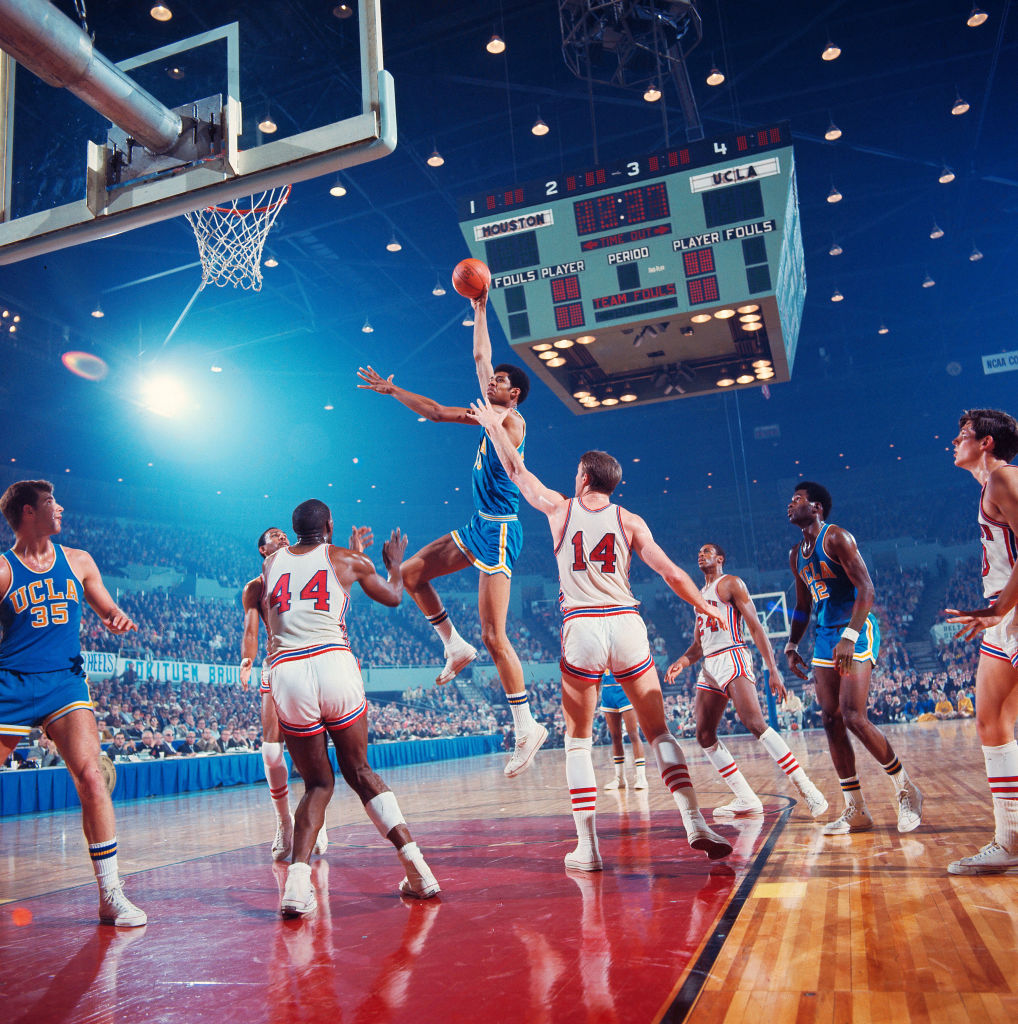NCAA
Why Did the NCAA Ban Dunking for 10 Years?

Dunking is one of the most exciting moments in a basketball game. A thunderous dunk can bring fans to their feet and energize a crowd. It’s so popular in today’s game it even has a contest dedicated to it. So why exactly did the NCAA ban dunking for ten years?
History of dunking
The first dunk in organized sport happened in 1936. Joe Fortenberry, a 6-foot-8-inch Texan, introduced the dunk during the Berlin Olympics. Fortenberry captained the American squad on its way to winning the gold medal in the first Olympics to include basketball.
Early on, basketball purists despised the dunk. Kansas basketball coach Phog Allen said as much when describing the dunk in his 1937 book.
“Dunking does not display basketball skill—only height advantage.”
Kansas Basketball Coach Phog Allen
Less than a decade later, the first college dunk happened in 1944, on accident. Oklahoma A&M’s Bob Kurland, one of the college game’s first 7-foot centers, unexpectedly dunked in a game against Temple.
“The ball happened to be under the basket. I got it up and stuffed it in. That started it, I guess,” the late Kurland told the Orlando Sentinel in 2012. “It was an unintentional accident. It wasn’t planned, just a spontaneous play in Philadelphia.”
Despite negative sentiment about the dunk extending into the 1950s and 1960s, some players continued to incorporate it into their offensive games. Many defenders, however, took offense to the play, viewing it as an insult that broke one of the game’s unwritten rules. In some instances, players showed their distaste for the act by deliberately taking out the legs of a dunker.
When and why did the NCAA ban dunking?

The NCAA banned the slam before the 1967-1968 college season for a couple of reasons. In the organization’s words, the dunk “was not a skillful shot,” and the rules committee said the ban was also a result of injury concerns.
Their report cited 1,500 events where a player was hurt around the backboard during the previous year.
While the NCAA never admitted it explicitly, many speculated the NCAA enacted the ban because of UCLA’s Lew Alcindor (he would later change his name to Kareem Abdul-Jabbar). Alcindor regularly dunked over his opponents his first year in college.
The media nicknamed it the “Lew Alcindor rule,” which prohibited players from making shots above and directly over the cylinder.
Alcindor’s coach at UCLA, the legendary John Wooden, said the NCAA indicated Alcindor was not the reason for the rule. However, the officials did admit his name came up in discussions.
Wooden, who was known for focusing on the game’s fundamentals, explained to his star center, it didn’t matter if he was the reason for the rule, it’s implementation was “going to make him a better basketball player.”
Alcindor didn’t necessarily agree. He thought the move had nothing to do with injuries and more to do with race.
“To me the new ‘no-dunk’ rule smacks a little of discrimination,” he told the Chicago Defender. “When you look at it … most of the people who dunk are black athletes.”
Regardless of the NCAA’s reasoning, Alcindor adapted and developed a new move called the skyhook and led the Bruins to national championships the next two seasons. He did it all without a single dunk.
Dunking is back
The NCAA’s ban on dunks lasted for ten seasons until 1976-1977. During that time, players with above-the-rim skills had to drop in the ball delicately. Players like University of Massachusetts star Julius Erving and North Carolina State’s David Thompson, a great dunker in his day, played their entire college careers with the ban in place.
“It was tough not to be able to dunk the ball when you are way over the rim. It would have been way easier to catch it and dunk it in one motion,” Thompson once said in an interview.
Thompson, who led the Wolfpack to its first NCAA title in 1974, didn’t dunk his entire college career with one exception. During the final home game of his senior year, he found himself all alone on a breakaway. There was no other option. Thompson, who went on to play seven years in the NBA, jammed the ball through with authority.
“I got a technical foul and a standing ovation at the same time,” Thompson said. North Carolina State head coach Norm Sloan immediately subbed out the senior to thunderous applause.
The NCAA rescinded the rule the following season.











